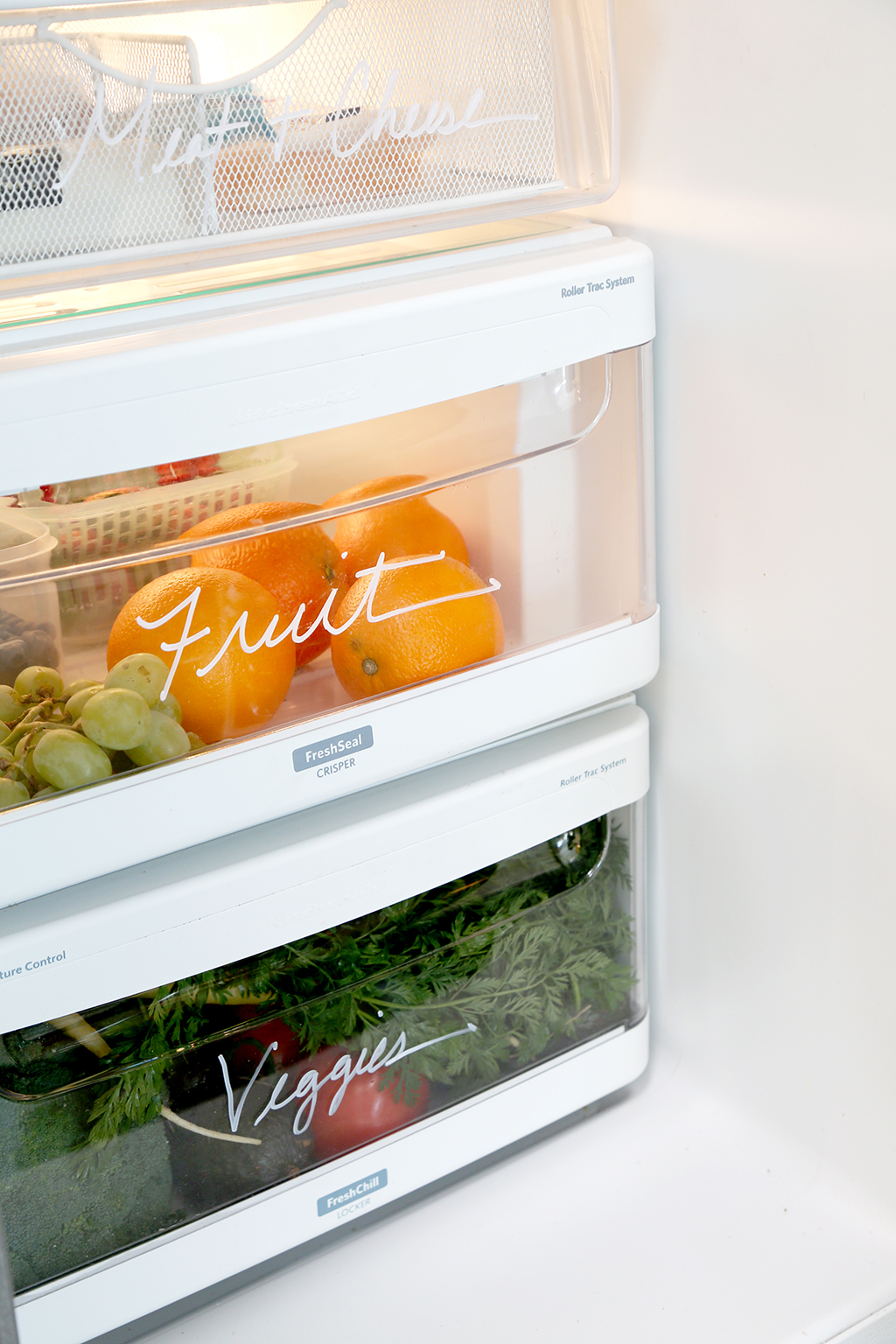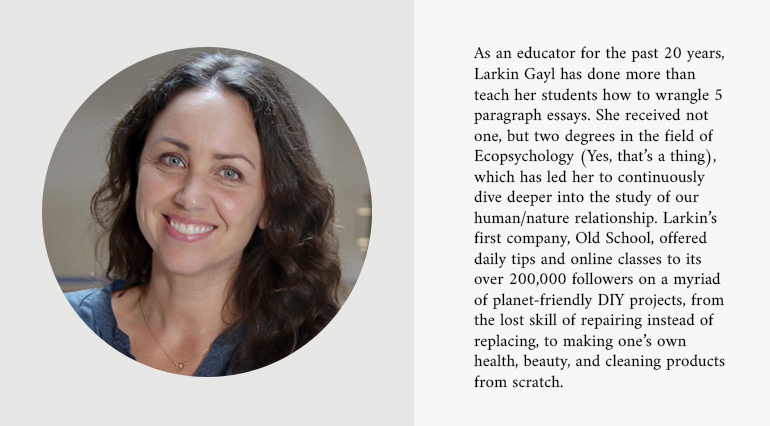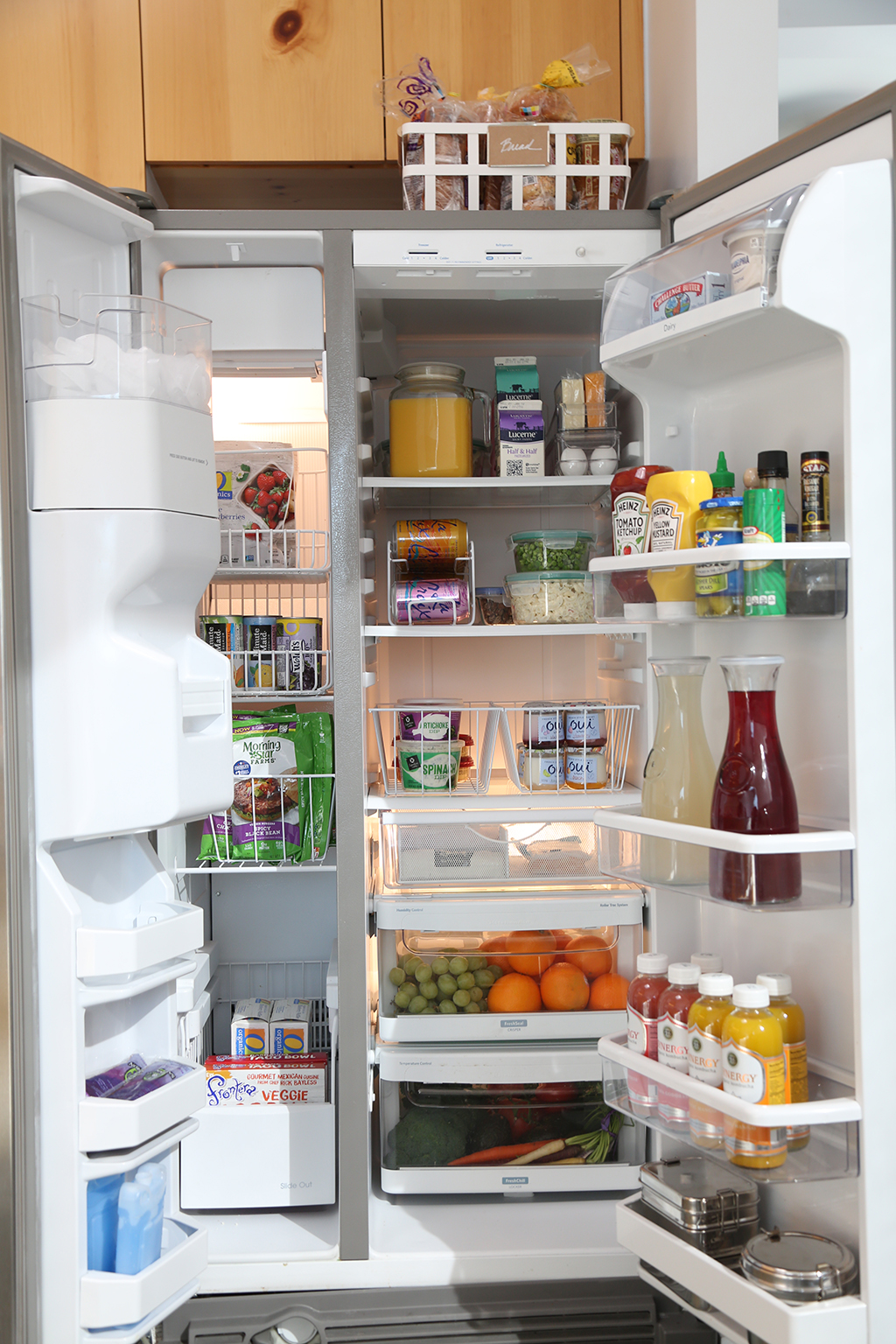
January over here at Simply Spaced is all about that kitchen refresh. We’re focusing on new ways to simplify our lives with clean, green, sustainable practices that support a healthy life. It all begins in the kitchen. Welcome, Larkin, founder of Unfettered Home.
Ready for a fridge and pantry refresh that will benefit your mind, body, and the planet to boot? Here’s how to simplify your routine so you can stop wasting food, keep it fresh longer, and keep harmful plastics out of your body and the earth.
What’s the big deal with food waste anyway?
Over 1/3 of food produced globally is wasted, and it doesn’t need to be. Each morsel you consume has had a long journey before it reached your plate. Take your lettuce mix, for example. Each little piece of baby lettuce started out as a seed, which was planted, harvested, transported, washed, packaged, transported again, and maybe again before you found it in your grocery store. That’s a lot of effort and resources for a couple of salads!
Then, let’s say you forget about that little bag of lettuce at the bottom of your produce drawer. There’s a good chance that by the time you find it or use it up, it will have gone bad.
Wasted food = more decomposing organic matter in our landfills = production of greenhouse gasses (methane) = global warming = climate change
Of course, none of us want to be wasteful, especially with food, but without a system in place, it’s more likely to happen. Things get lost, go bad, or fall through the cracks of a cluttered kitchen.
Here’s what you can do to reduce your food waste and simplify your routine at the same time.
Plan: Save time, money, and food by thinking ahead.
- Plan your meals in advance, and don’t be afraid to get the family involved! Kids are more likely to eat food they’ve chosen and helped make.
- Dedicate time each week for planning and keep meal ideas on your phone or notepad when inspiration strikes. Meal-planning apps like Mealime or AnyList, are helpful for keeping track of ideas and grocery lists.
Shop: Stick to your list, and don’t overdo it.
- Take pictures or write a list of whatever you already have. This will curb over-shopping and help prevent buying duplicates.
- Don’t buy more just because it’s cheaper. Everyone loves a good deal, which can lead to buying more of something just because it’s on sale. Unfortunately, the savings mean nothing when half of that food ends up in the trash.
- Keep it simple and spacious. Having too much in your pantry and fridge is not only mentally draining, but you’re likely to miss items that need to be consumed.
- Bring your own containers and buy what you can in the bulk section of your store. If bulk shopping isn’t an option, choose the item with the least amount of packaging that you’re sure you can recycle or compost later.
Store: Organize then label, label, label.
- In the Fridge: Follow the “First In, First Out” rule, meaning organize older items in the front of your fridge, so you will see and use them up first. New items should be placed behind older ones. Have dedicated places for food types. For instance, keep all cheeses in a drawer, dressings and condiments in the door, and leftovers that need to be eaten on a particular shelf. This will keep things from getting lost and overlooked.
- In the Freezer: Did you know you can store frozen food in glass? You can easily replace plastic containers and bags with wide-mouth mason jars, silicone bags, or glass food storage containers. Be sure to leave an inch of room so contents can expand as they freeze. Remember, frozen items will dry out over time, so be sure to put dates on everything and don’t wait too long to use it up.
- In the Pantry: Use large, transparent storage containers to decant things like flour, beans, grains, cereal, and loose snacks like chips. This way you can see how much is left and when it’s time to buy more. Marry like items with like (like those three, half-used bags of basmati rice that might be hiding in the back of the shelf, just out of sight).
Serve: A little goes a long way.
- Serve meals on small plates so leftover food ends up in the fridge to be eaten later, not scraped off the plate into the compost or trash. If you don’t think you’ll eat them any time soon, freeze leftovers for future meals.
- Let it go: First, donate, then compost, then send it to the landfill.
According to the EPA’s Food Recovery Hierarchy, unexpired foods should be used as sustenance for humans or animals before being composted.
If you’re doing a kitchen clean out, see if you can donate unused items to your local food bank or shelter first, then compost any contents before recycling or throwing away the packaging.
Expired or rotten food should be composted rather than thrown in the trash. Backyard compost piles and bins are perfect for food scraps, or call your local municipality and see if you can put food waste in your curbside yard waste cart. If neither is an option, look for a compost collection program at a local farmers market or composting co-op.
What about expiration dates?
There’s a bit of controversy about expiration and “sell by” dates. Some toss out anything that has gone a day beyond the date and others consider it a loose guideline that is more for the stores’ ability to track freshness, not for the consumer to know whether the food has gone bad or not.
Regardless of which camp you’re in, be sure it smells and looks fresh before you eat it. Trust your senses, which were built to distinguish between edible and inedible foods for the sake of survival. If it smells/looks/tastes bad, it probably is.
Here are some nifty breakdowns about storage and shelf life of fruits and veggies, dairy products, and meats.
Food waste is a problem we all can tackle with a little bit of planning, organizing, and understanding. Plan ahead, make space and simplify your routine, and you’ll be saving money, stress, and the planet at the same time.

